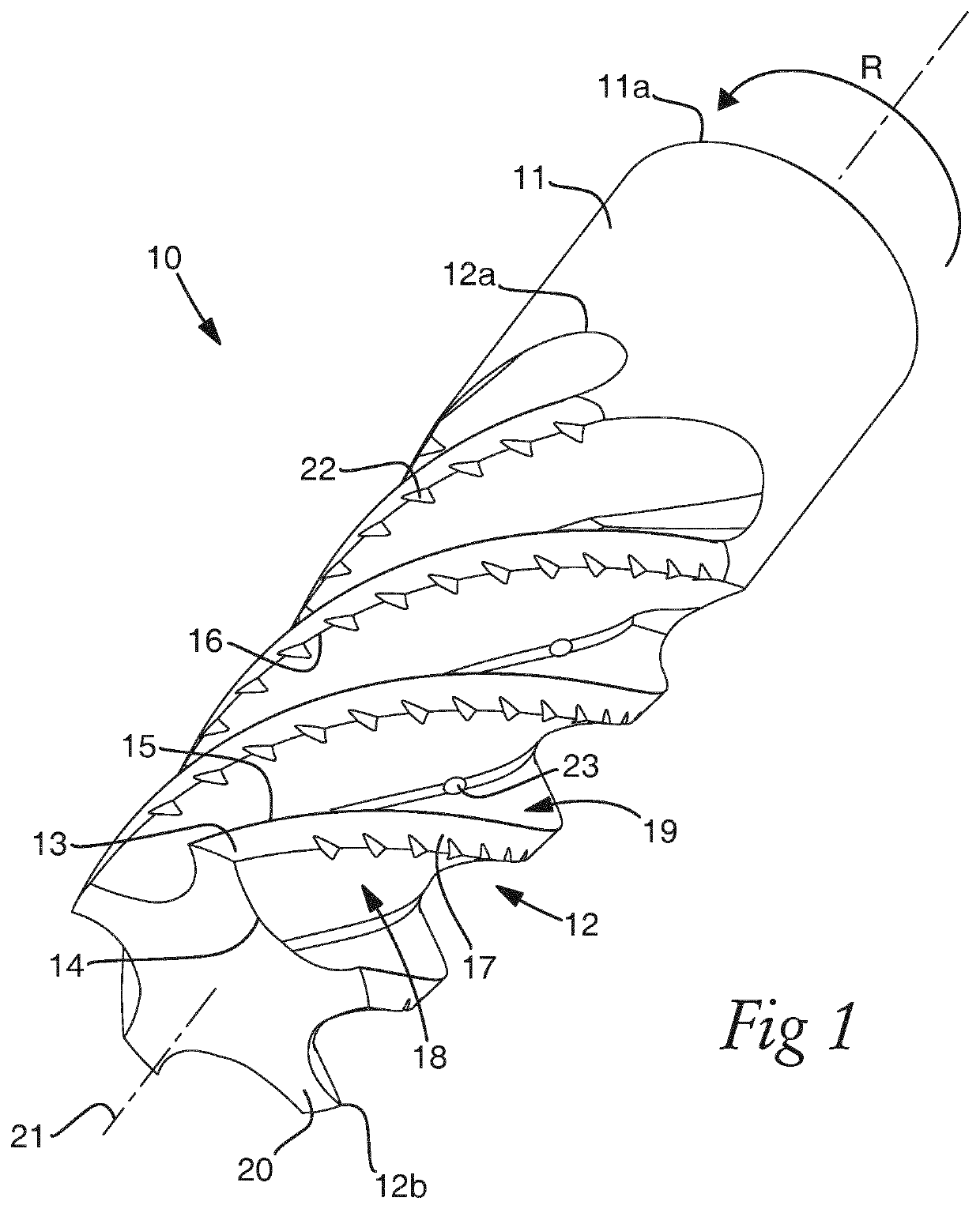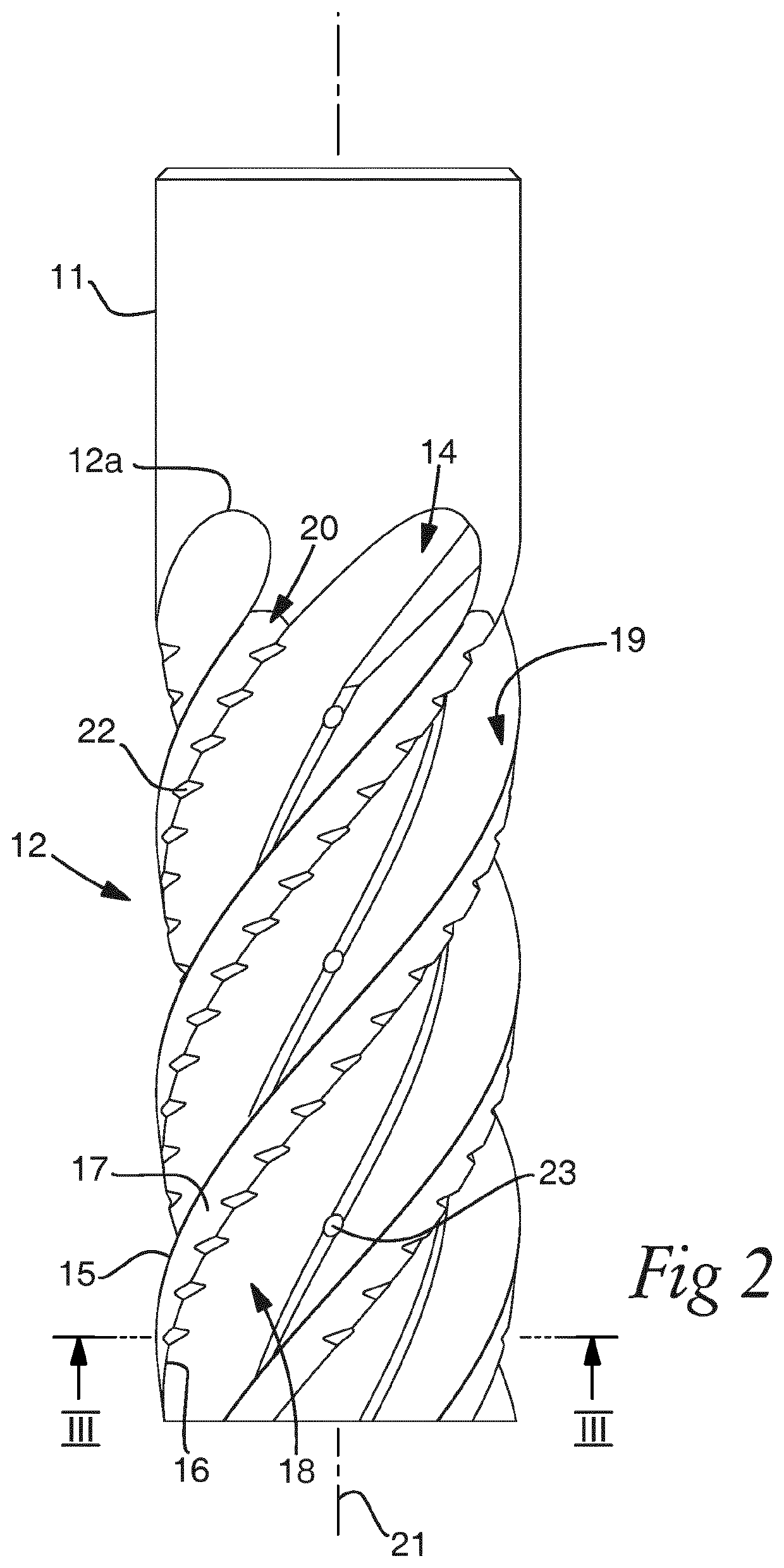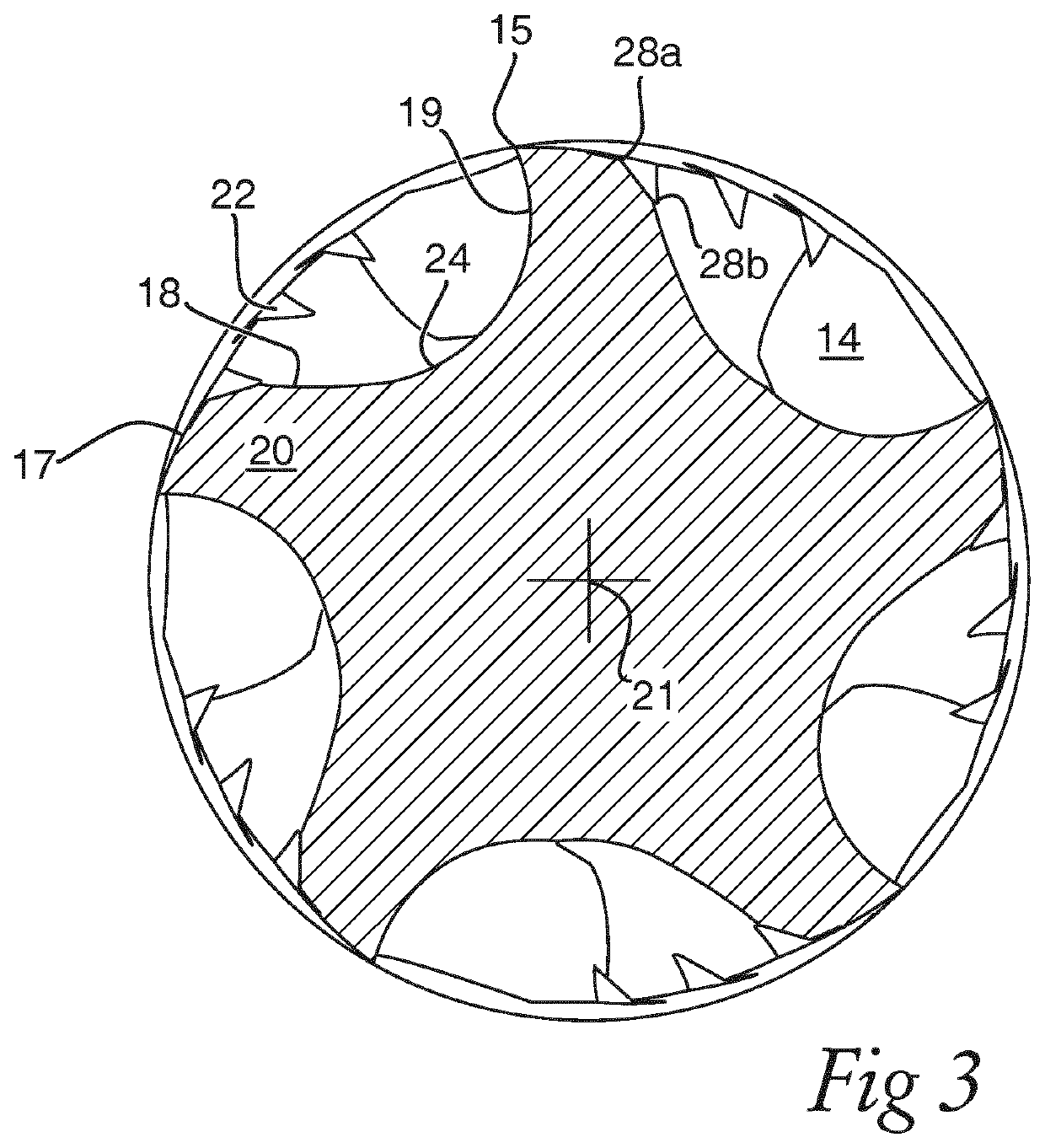Milling tool with coolant flow grooves
- Summary
- Abstract
- Description
- Claims
- Application Information
AI Technical Summary
Benefits of technology
Problems solved by technology
Method used
Image
Examples
Embodiment Construction
[0028]Referring to FIGS. 1 and 2 an elongate rotary milling tool 10 comprises a head indicated generally by reference 12 and a shaft 11 formed integrally with head 12, with both the head 12 and shaft 11 having a common longitudinal axis 21. Head 12 is provided with 5 helical cutting teeth 20 that extend continuously from a first proximal head end 12a (positioned at the junction between head 12 and shaft 11) and a second distal (or terminal) head end 12b.
[0029]Teeth 20 are formed as raised ridges extending axially and radially at head 12 relative to axis 21 with neighbouring teeth 20 being separated by corresponding helical flutes 14 in a circumferential direction around axis 21. Accordingly, each tooth 20 is defined by a clearance face 18 and an opposite rake face 19 with a thickness (in the circumferential direction) of each tooth 20 being defined between the opposed clearance and rake faces 18, 19. Clearance face 18 is terminated at a radially outermost region by a helically exte...
PUM
 Login to View More
Login to View More Abstract
Description
Claims
Application Information
 Login to View More
Login to View More - R&D
- Intellectual Property
- Life Sciences
- Materials
- Tech Scout
- Unparalleled Data Quality
- Higher Quality Content
- 60% Fewer Hallucinations
Browse by: Latest US Patents, China's latest patents, Technical Efficacy Thesaurus, Application Domain, Technology Topic, Popular Technical Reports.
© 2025 PatSnap. All rights reserved.Legal|Privacy policy|Modern Slavery Act Transparency Statement|Sitemap|About US| Contact US: help@patsnap.com



